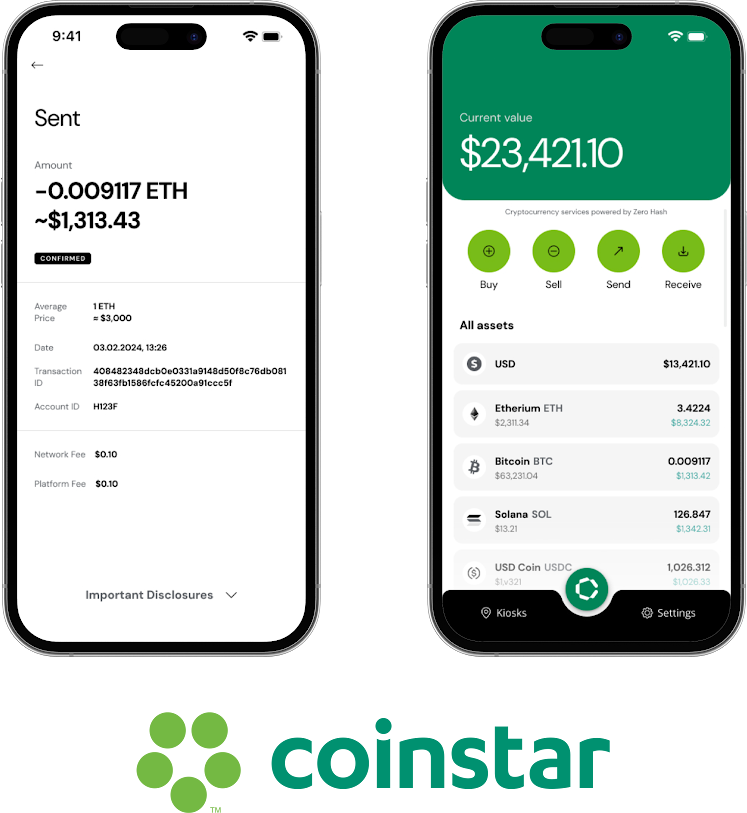The global trading software market reached an overwhelming $7.2 billion in 2024. With the myriad of trading solutions available, it’s no wonder investors are becoming increasingly picky.
As a result, market players are striving to offer the best services. Instant access to reliable data is crucial to finding profitable opportunities and controlling risks. The more understandable the data, the easier it’s for an investor to make an informed decision. That’s why they opt for brokerages that provide market data in real-time and in the most digestible format possible.
If you’re thinking about launching your own trading platform, you’ve probably heard of TradingView. In this article, we’ll take a closer look at this platform, its API, and its use cases and costs.

What is a TradingView Platform?
TradingView is a technical analysis platform that provides comprehensive, understandable, and interactive charts. It aggregates data and then uses it for detailed technical analysis. TradingView is popular among both experienced traders and beginners due to its extensive features. The platform allows users to search and manage charts for any instrument, provides access to a variety of technical indices, enables social networking, and much more.
Users can also manage orders within TradingView, but to trade manually, they need to sync their broker accounts with the platform. For those who prefer algo trading, a powerful tool is available – Pine script. Pine Script is TradingView’s native scripting language used to create custom technical indicators, strategies, and trading signals directly on TradingView charts. It is designed to be easy to write and optimized specifically for financial time series analysis. With Pine Script, users can build and backtest automated trading strategies, set alert conditions, and visualize data in flexible ways. Thousands of community-created Pine scripts are available for reference, making it a powerful tool for both manual and algorithmic traders.
Now it’s time to jump to TradingView API. Essentially, TradingView data API can be thought of as a virtual database that stores the most recent (and historic) information about stock prices and their performances, as well as offers actionable insights into the market. Integration with this API also provides brokers with access to a huge community of traders and investors and can reach a wider audience through the platform.
What is TradingView API and How Does It Work?
The TradingView API is not a traditional data API but rather a set of integration tools that allow platforms to connect with TradingView’s charting and market ecosystem. Brokers, crypto exchanges, stock exchanges, Forex providers, analytics providers and other various trading platforms can supply their own real-time and historical market data to TradingView. This provides users with consolidated and convenient service to visualize price movements and analyze market trends in one place instead of many.
On their end, by integrating with TradingView, data suppliers gain exposure to its large community of traders and investors, expanding their reach and engagement within the platform (and sometimes there is a fee for buying this data).
However, these integrations are not what we typically mean when we say “use TradingView API”. We will focus on the TradingView API which is intended for their clients – data consumers (various trading platforms, trading bots, individual traders). Coincidentally, some of TradingView data suppliers are among TradingView API services consumers as well, more on that further.TradingView does not provide a public REST API for market data. That means that you can’t just download or get market data via TradingView API and use it directly. The only way to get a full picture about the market situation is to see charts on the TradingView website with your own eyes.
At the same time, TradingView offers several integration options for those who want to use TradingView more than just a website.
What Makes TradingView API Unique?
TradingView dominates technical analysis with 50M+ active traders. Its services include:
| Component | Description | Tech Stack |
|---|---|---|
| Charting Library | Embed interactive charts & drawings | JavaScript/WebSocket |
| Data Feed API | After embedding charts, source market data yourself or from a provider—TradingView has no API—and feed it in the Data Feed API’s required format. | WebSocket |
| Trading Terminal | Licensed brokers/custodial platforms/banks only: add a panel beside charts to route orders to your execution service (TradingView is info-only), and pair with Embedded Charts. | OAuth 2.0, WebSocket, REST API |
| Alerts System | Use Pine Script alerts instead of 24/7 monitoring—set conditions (e.g., BTC $100k), add JSON trade instructions, and route triggers to your system or via SMS/email/push/chart. | Webhooks |
Key Advantage: Slash development time by 6-9 months vs. building charting tools in-house.
Why Use TradingView API?
Using API in the process of app development is a common practice, that helps to cut costs and decrease time-to-market. It allows to equip software with a comprehensive set of features quickly instead of developing each of them from scratch.
So, the main benefit of TradingView API integration with your solution is that it allows you to offer a rich trading experience without building complex charting and order management tools from scratch. By integrating with the TradingView Trading Terminal and Broker API, your users will be able to manage orders directly from charts (submit, modify, cancel, pause), and monitor their positions. Your platform will also be able to display market data, account balances, trading history, and portfolio metrics – using your own data sources, while leveraging TradingView’s advanced front-end interface.
Another great feature worth mentioning is that TradingView developer API has a pre-made component and they allow third-party vendors to use their widget for drawing charts. For users, this means that there is no need to develop functionality from scratch.
What’s more, the platform offers flexible marketing tools. It allows integrated brokers to set exclusive branding – e.g., logo, motto, sign-up links, etc.
- TradingView provides industry-leading charting capabilities that enhance the trading experience. It gives access to advanced charting tools, extensive library of technical indicators, multi-chart layouts for analyzing multiple assets simultaneously.
- TradingView’s intuitive and visually appealing interface is familiar to millions of traders, reducing the learning curve.
- Mobile and web compatibility ensures a consistent experience across devices.
- TradingView offers flexible integration options via APIs, widgets, or white-label solutions.
5 Critical Implementation Tips
- Data Licensing: Verify exchange-specific requirements
- Caching Strategy: Reduce API calls with Redis/Memcached
- Error Handling: Plan for exchange downtime (99.95% SLA)
- Mobile Optimization: Use lightweight WebViews
- Security: Encrypt all WebSocket data with TLS 1.3
Cost of TradingView Services
Although available for free, the basic version of TradingView API gives quite limited access to its features. To get more control and open full potential, investors need to purchase a paid version of the instrument. There are 5 main plans available at ranging costs, with the first one starting from $14.95/per month, and the most advanced, the Ultimate version, costing around $239.95 per month. More information on the cost could be found on the TradingView website or by requesting a quote on the plan based on your needs. The cost of TradingView API integration for brokers is formed individually.
2025 Pricing Breakdown
Individual Plans
| Plan | Monthly Cost | Key Features |
| Basic | Free | Delayed data, 3 indicators |
| Essential | $14.95 | 2 charts per tab, 5 indicators per chart, 20 alerts and more benefits |
| Plus | $33.95 | 4 charts per tab, 10 indicators per chart, 100 alerts and more benefits |
| Premium | $67.95 | 8 charts per tab, 25 indicators per chart, 400 alerts and more benefits |
| Enterprise | $239.95 | 16 charts per tab, 50 indicators per chart, 1000 alerts and more benefits |
Summary
To sum it up, integrating with the TradingView developer API enables bringing a more robust trading solution in a shorter time and ensures a better user experience due to access to valuable tools and data. Want to integrate your software with TradingView API, or want to build your own trading system from scratch? At Itexus, we’ve been helping financial services companies and fintech startups bring their ideas to life since 2013. We have experience in setting up integrations with TradingView utilizing several of their services patterns.
Ready to Integrate?
Next Steps for Your Platform:
- Audit data requirements (symbols, timeframes)
- Choose integration service and plan that corresponds to it (Plus, Premium, etc.)
- Develop middleware for brokerage connectivity
- Implement user permission controls
We’ll be happy to contribute our expertise to your project. Contact us to find out how we can help.
